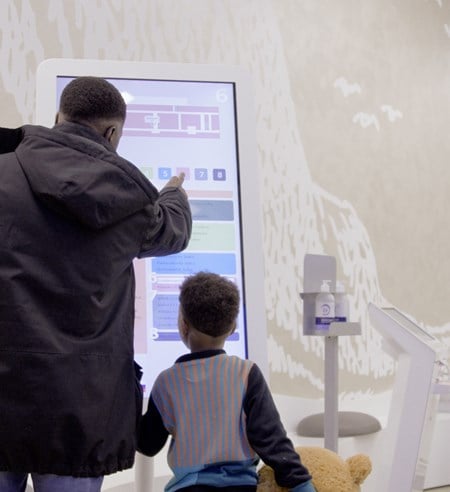Head of data-driven care
The challenge
Simplifying and supporting the work of healthcare professionals. Ensuring fast data retrieval, freeing up time for patient care and streamlining work.
The solution
A straightforward inter-organizational system with collated medical data. Lifecare improves patient care by providing uninterrupted access to all necessary data.
About the customer
The Kanta-Häme Hospital District (KHSHP) is responsible for arranging specialized medical care in the Kanta-Häme county area. The 11 member municipalities of Kanta-Häme Hospital District are Hämeenlinna, Riihimäki, Forssa, Janakkala, Hattula, Hausjärvi, Loppi, Tammela, Jokioinen, Ypäjä, and Humppila.
Kanta-Häme Central Hospital in Hämeenlinna and the Riihimäki Hospital treat approximately 65 000 customers annually. The hospital district employs roughly 2000 professionals and serves the area’s 173 000 residents. KHSHP is part of the Tampere University Hospital catchment area.
Kanta-Häme Hospital DistrictImproved patient safety
The entire hospital district has access to medical records and patient histories. Data is saved and stored in a single, shared system, which improves decision making and care.
Faster treatment and recovery
No more overlapping examinations. The system stores the documentation of examinations, thus freeing up time for patient care.
Tailored workspaces
The workspace changes according to the task and role at hand, and the user can modify the opening window to match his or her needs. The tailored user interface makes information retrieval faster.
Learning the new system
Lifecare was deployed in the Kanta-Häme Hospital District in March 2019. Assistant Head Nurse Marjaana Tegelberg and Medical Specialist (geriatrics, pulmonology) Kristiina Vuorinen of Kanta-Häme Central Hospital, Hämeenlinna share their experiences of using Lifecare.
Tegelberg works in the pulmonary and internal diseases inpatient ward as well as in an administrative role. When working in the inpatient ward, Tegelberg uses Lifecare daily. For her, learning how to enter data into the system required some effort. However, when necessary information is carefully logged into the system, patient data follow-up is easy.
”The personnel was onboarded when Lifecare was deployed. We quickly noticed that it’s not as tricky to use as we’d anticipated. The medications section, which changed the most, required the biggest learning efforts.”, Tegelberg says.
Vuorinen works in the surgery ward as a hospitalist i.e. she specializes in managing patients’ preceding illnesses if they are worsened by surgery or other factors.
”I’m following more or less all entries made of a patient. The Kanta-Häme Central Hospital and the health centers use the same system, which makes it a lot easier to track different medical records, laboratory tests and other examination results.”, Vuorinen says.
”Doctors and nurses work together through orders. In fact, verbal orders aren’t orders at all – everything must be documented in the system.”
Kristiina Vuorinen
Medical Specialist

Video is blocked
Care chain follow-up is easier than ever
Learning to use Lifecare has been easy for Tegelberg. These days, she is very familiar with the patient summary page and has learned to use it in a more versatile way.
”I like the visuals. Sometimes I’d like to have two screens because you can click open many different windows and datasets. It’s good that you can simultaneously read doctor’s notes and read and write the nursing care plan.“
For Tegelberg, the most important features of the system are the nursing care plan, observation chart and the medications section. Furthermore, her work benefits from the easy retrieval of different documents – the patient’s summary page shows, for example, pictures taken of a wound.
”Risk factors, such as allergies and DNRs (Do Not Resuscitate), are also shown and can be accessed immediately. As one can imagine, for example DNRs are very important in the internal diseases ward. All in all, the number of clicks has decreased from before.”, Tegelberg says.
”Having a shared system in both primary and specialized healthcare is a substantial improvement for patient care.”
Kristiina Vuorinen
Medical Specialist
The medications section has been developed, among other things, by harmonizing procedures. Medication lists and alterations to medications are now handled identically in every ward.
Because of Lifecare, primary and specialized healthcare now use the same system, making care chains significantly easier to follow.
”We can see – and easily search for – whether a patient has been to a health center for an ailment before. We can avoid doing overlapping examinations by reviewing the patient’s history. All in all, the more we know our patients, the better we can treat them.”, Vuorinen says.
”Lifecare has expedited our work. The number of clicks has decreased since the last version. As the system becomes more familiar, it is easier to find information. This saves time for patient work. The best feature is the summary page which gives you a lot of data in just one glance.”
Marjaana Tegelberg
Assistant Head Nurse, Pulmonary and internal diseases inpatient ward





